What Is Transitional Style
Transitional style is probably the most popular style right now. It is fresh and attractive and this style can be blended with almost any other style. Transitional style might be your style. Here’s how to do it right.
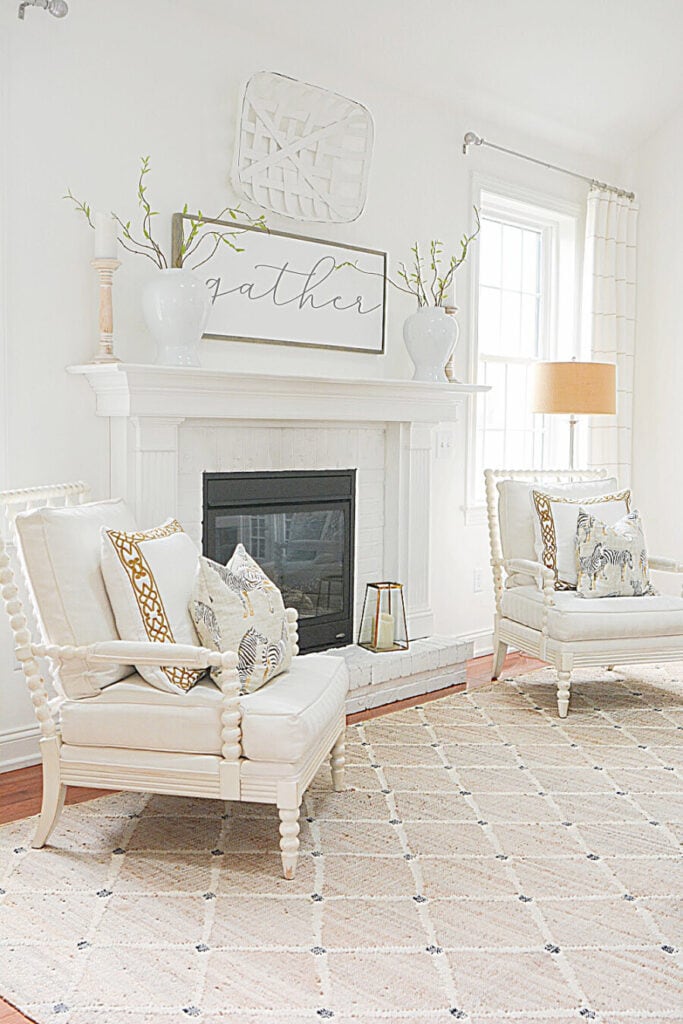
There are many design styles. Contemporary, Traditional, Farmhouse, French Country, and Grand Millennial just to name a few. My style is Transitional and maybe yours is too. It’s a very popular and versatile style. I thought I’d talk a bit about just what is Transitional style and what it means to have a transitional home style.
Transitonal style is probably the most popular design style right now.
And no wonder! It’s the perfect mix of traditional and contemporary styles blended together with other accent styles too, to make a synergistic masterpiece of beauty and comfort! It has a bit of the formality of traditional styling but is comfortable and interesting and familiar in the best way!
Wow, doesn’t that sound beautiful!
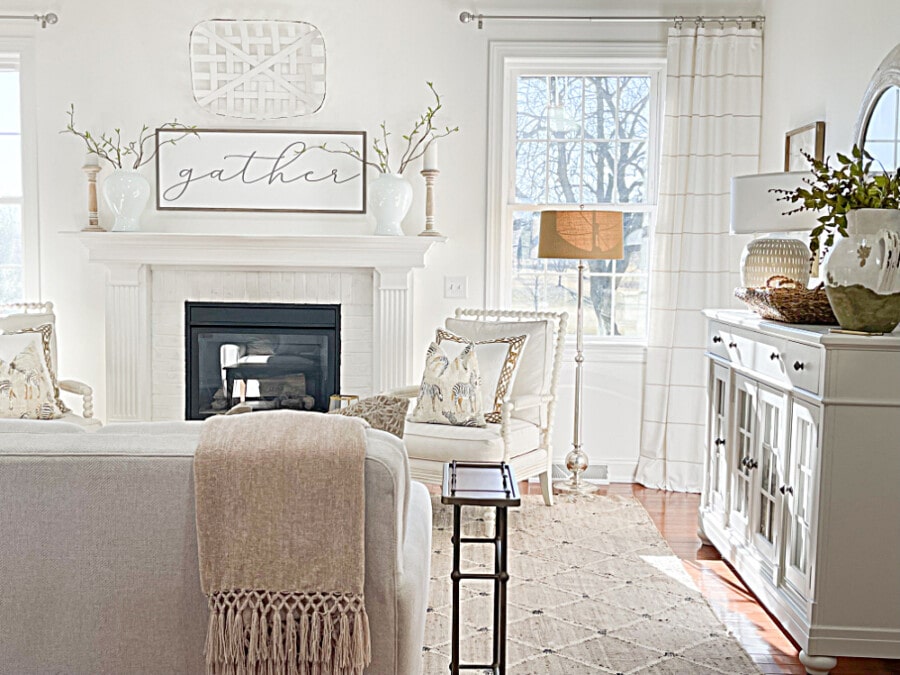
Our home’s a Transitional mix of Traditional and a little bit of Farmhouse 2.0 (new and updated Farmhouse) and just a tiny bit of French and Contemporary. I’ve blended these styles together using designer rules for Transitional style.
I’m giving you a little preview of our home dressed up for early spring as we chat about Transitional style.
WHAT DOES “TRANSITIONAL STYLE” MEAN?
Transitional style is a SUPER CATEGORY! Transitional style is like a big umbrella that other sub-styles are collected under.
This style combines so many types of designs all at the same time! It’s eclectic, to say the least, but there are some design styles that shine through to keep it from being an unorganized mess! Instead, it is so delightfully pleasing to the eye.
Transitional decor is a balance of classic decor with a fresh bit of style and function. It is the perfect marriage of home decor styles that are tried and true.
The beauty of Transition style is its foundation that is rooted in classic decor. Things that are timeless and do not easily go out of style. And this is what makes Transitional decor so so appealing to me.
I love the longevity of this style. So I don’t mind investing in classic pieces of furniture.
Transitional style loves classics that are updated and it can always be kept fresh with more trendy items.
Think of Transitional style as the perfect blend of updated favorites. Updated colors, slimmer furniture profiles with an emphasis on great bones!
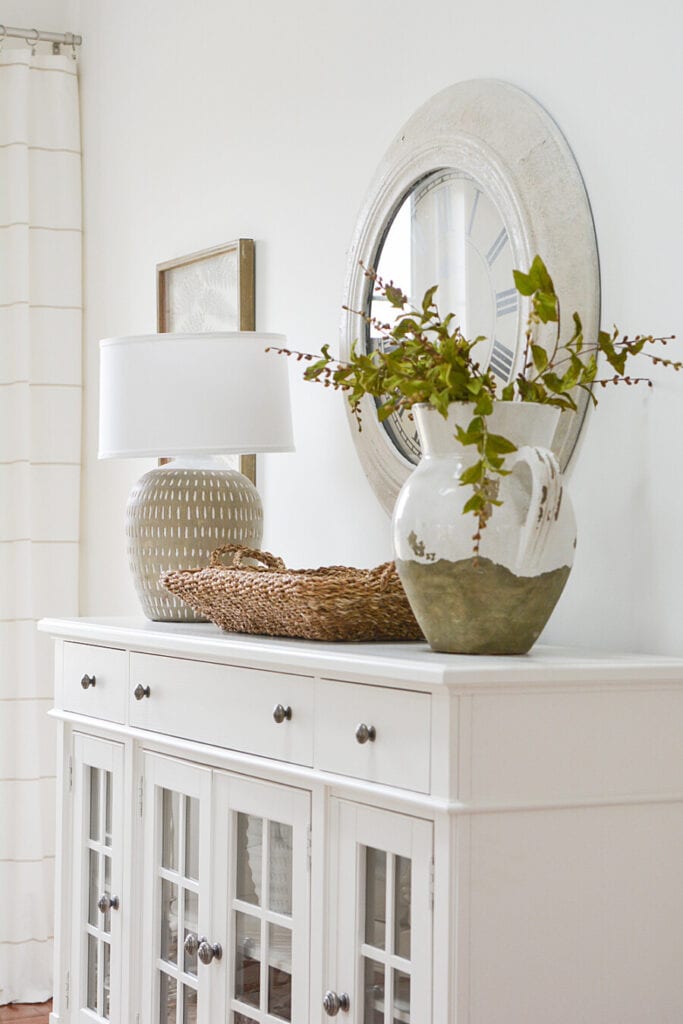
A GOOD WORKING DEFINITION OF TRANSITIONAL STYLE
It’s important to have a good working definition that is easy to understand and remember.
Think of Transitional style as the application of certain design rules to any style (Traditional, Mid-Century Modern, Farmhouse 2.0. French, Bo-Ho, Scandy, etc) that makes that style look fresh and updated and very very interesting!
These rules, if followed, will create beautiful Transitional style.
5 TRANSITIONAL STYLE RULES TO FOLLOW
When I talk about rules to follow in interior design I often say you can break a rule or two and still create beauty.
However, Transitional style is the exception to the rule, my friend!
These 5 rules should not be broken because you cannot achieve a cohesive and attractive Transitional look without them.
CHOOSE A NEUTRAL COLOR PALETTE
One of the easiest ways to pick out a home that is infused with Transitional style is by its color palette.
A neutral color palette is quintessential to this style. Think soft whites, beiges, creams, bisques, grays, greiges, tans, browns, charcoals, and even black.
There are just so many hues, tones, and shades to choose from when it comes to a neutral color palette.
When I talk about any color palette I say…
STAY IN YOUR LANE
These are easy words to remember! What I mean is to choose a color palette and don’t offroad to lots of other colors! This is so so important!
Choosing a color palette almost guaranteed a very cohesive, put-together, and beautiful look.
Adding more color often creates confusion! And this is especially true with a Transitional Style! No confusion!
If you love a little color, Transitional style is for you too!
A single color can be used as an accent. But just use it very sparingly and judiciously!
A COLOR PALETTE SHOULD CONTINUE THROUGHOUT A HOUSE
When it comes to a fabulous Transitional look, the color palette you choose should be used throughout your home. We need to commit! And never be half-hearted! Especially, if you have any type of open floor space!
Stay in the same color palette lane for your whole home!
Transitional style can either look so incredibly wonderful or just so bad! Don’t offroad by creating spaces with a different color palette. This is the death knell of gorgeous Transitional style.
FEWER PATERNS/ MORE TEXTURE
Transitional style uses fewer patterns. Unlike Traditional style that loves lots and lots of pretty patterns, Transitional style is more about texture than pattern.
That does not mean that it is devoid of pattern, there is just not a lot of it!
This style traded out patterns and replaced them with a much more subtle but effective substitute. And that substitute is texture!
Texture is king in Transitional Style! So don’t be afraid to layer texture!
See how to use texture in your home HERE.
CHOOSE OLD AND NEW PIECES AND SLIMMED DOWN FURNITURE AND LINES
Transitional style works best when your foundational furnishings are slimmed down. Think about putting them on a design diet!
No big rolled arms or fringes or heavy big wood. Transitional style is not petite, but the furniture lines are edited. Its visual weight is not heavy! Visual weight is a very important thing to know about as a decorator! You can learn about it HERE.
Mixing old and new items together makes Transitional style sing! But make sure they look proportional to one another. You can see what Proportion and Scale are in decorating HERE.
The goal is to blend old and new so they look like they belong together.
CHOOSE ONE FOCAL POINT FOR A ROOM
This rule can be tough! But it is a very important rule of Transitional style!
A focal point is one place in a room that our eyes are drawn to because it makes a statement and it demands attention. And that can add so much beauty to a room.
We can get quite carried away by filling every flat surface in our homes with something magnificent. I know, because I like to do that too!
But when we overdecorate, especially when it comes to Transitional style, all the flat surfaces in our home compete for our attention.
Transitional style is much more calm and defined! See how overdecorating in a room keeps us from creating beautiful spaces HERE.
So choose something a room and make it fabulous and let everything else in a room support that focal point!
Here’s how to find a focal point: it is the thing you first see when you enter a room.
When you enter our living room the first thing you see is the fireplace. So the fireplace and mantel should be the focal point of that room.
If the first thing you see is your sofa, then the coffee table would be a great place to concentrate a focal point! Or hang something eye catching over the sofa as a focal point.
Even your furnishings should be supporting actors to the focal point of your room. That’s why Transitional sofas and upholstered pieces are so often covered with light neutral fabrics. It’s an easy way for everything to work together.
WHAT ARE THE CHARACTERISTICS OF TRANSITIONAL STYLE
Here are some of the ways these 5 rules translate in a Transitional style room…
- A neutral and tone on tone color palette (creams, taupe, grays and a splash of black)
- Neutral color palette carried throughout the house
- Black and white color palette
- solid neutral upholstery with pattern and texture in pillows
- Less patterns altogether in a room
- Lots of texture
- Simple decor with minimal accessories
- Using items that may have been used for another function in the past (like galvanized trays)
- Classic furnishings with simple lines.
- One fabulous focal point
- Use art sparingly
Now raise your hand if you think your home is TRANSITIONAL? I bet lots of hands just went up!!!!

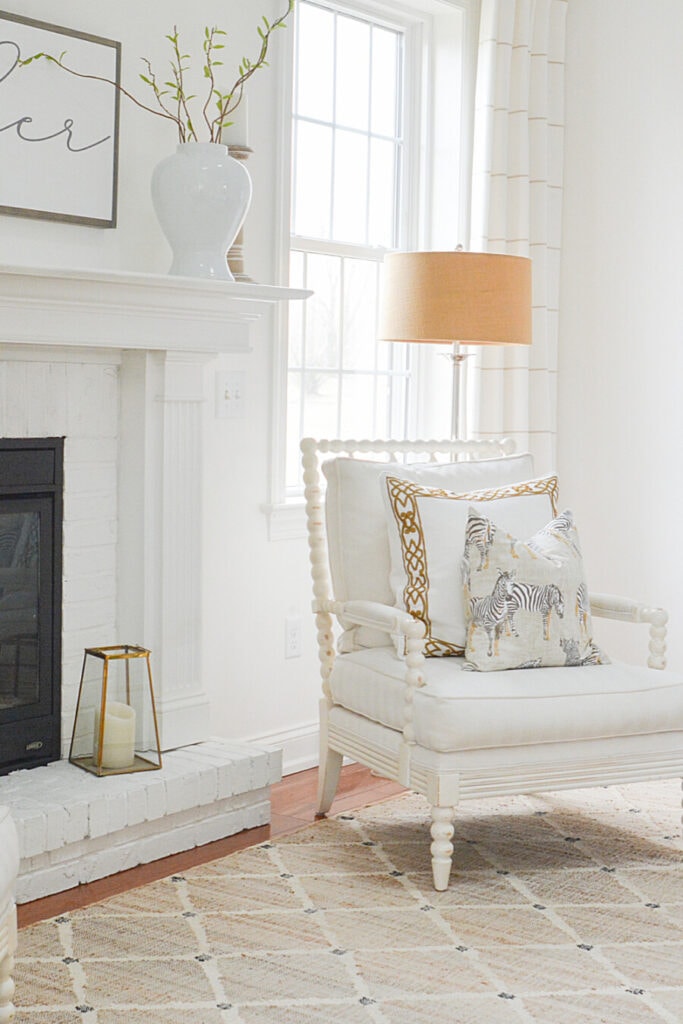
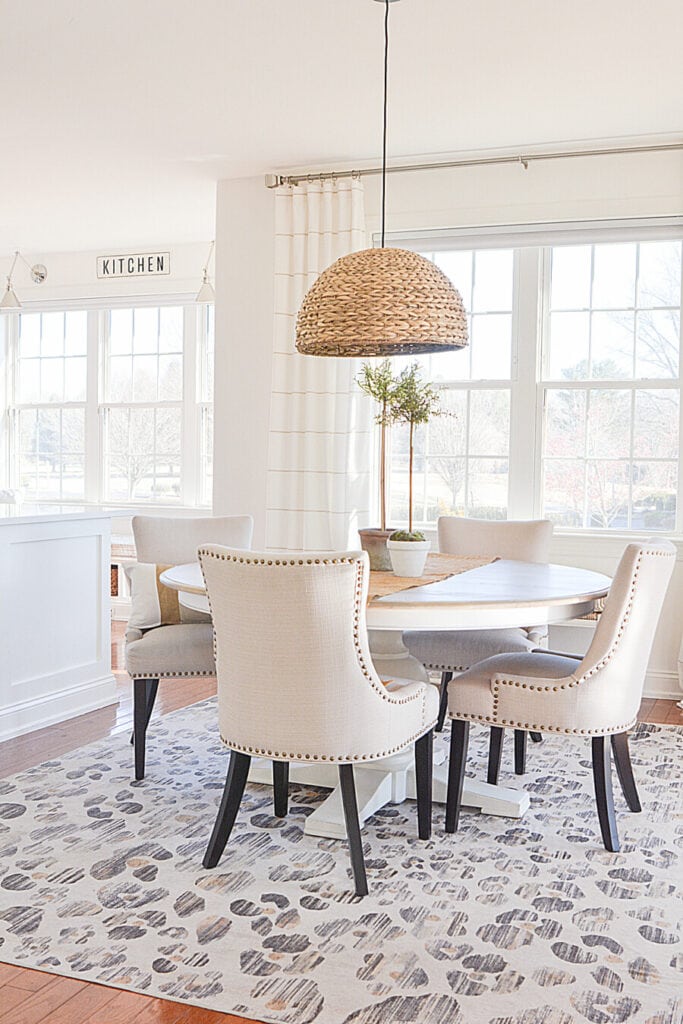
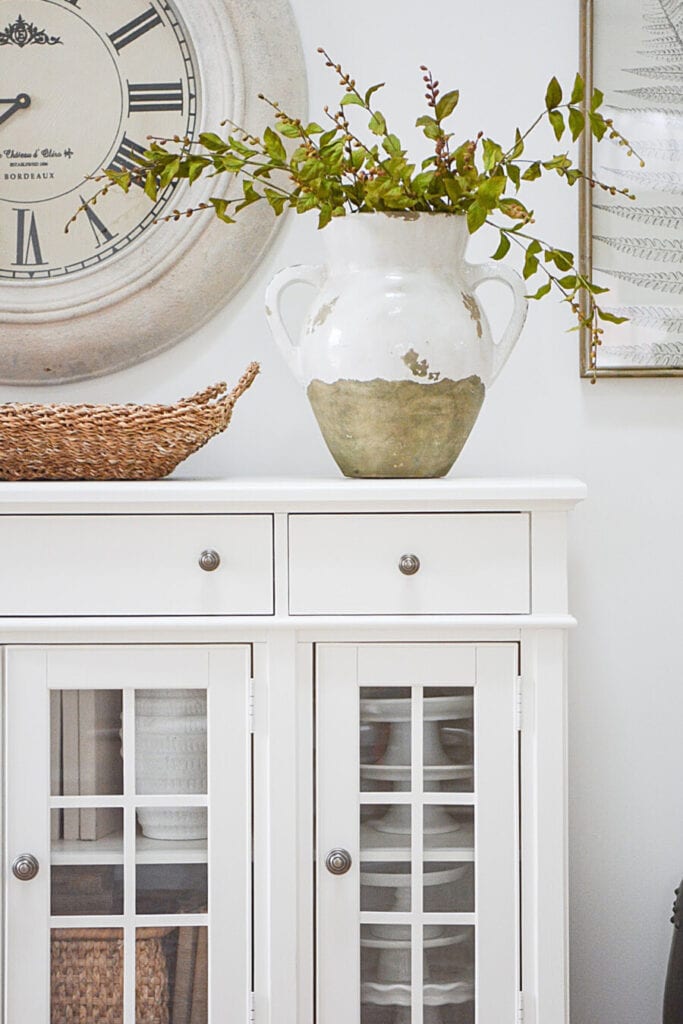
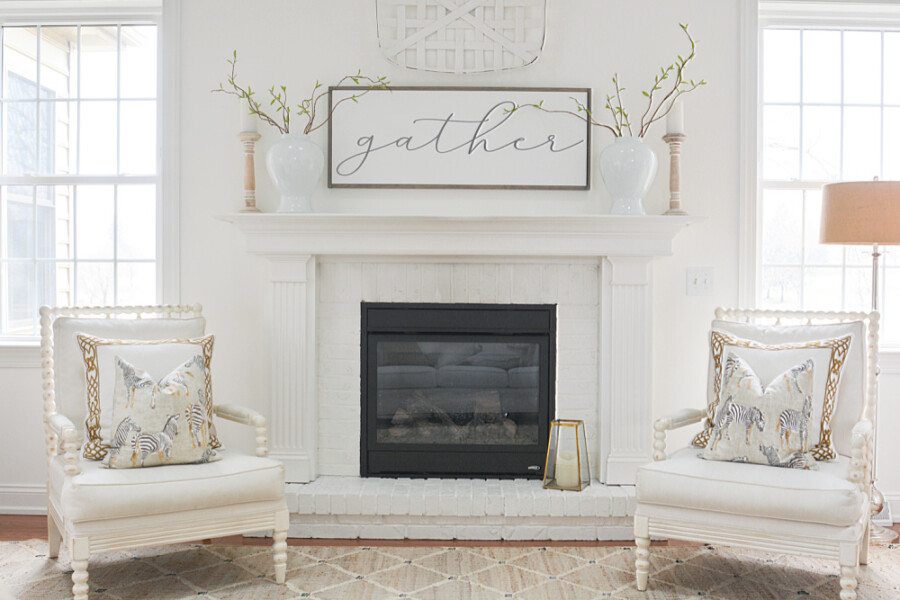
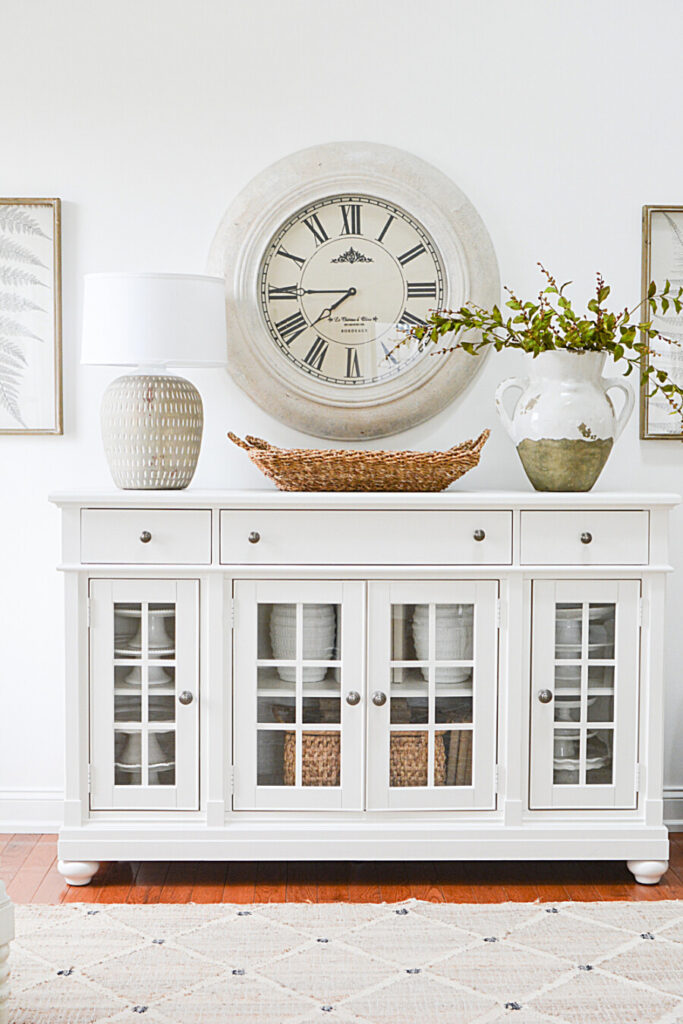
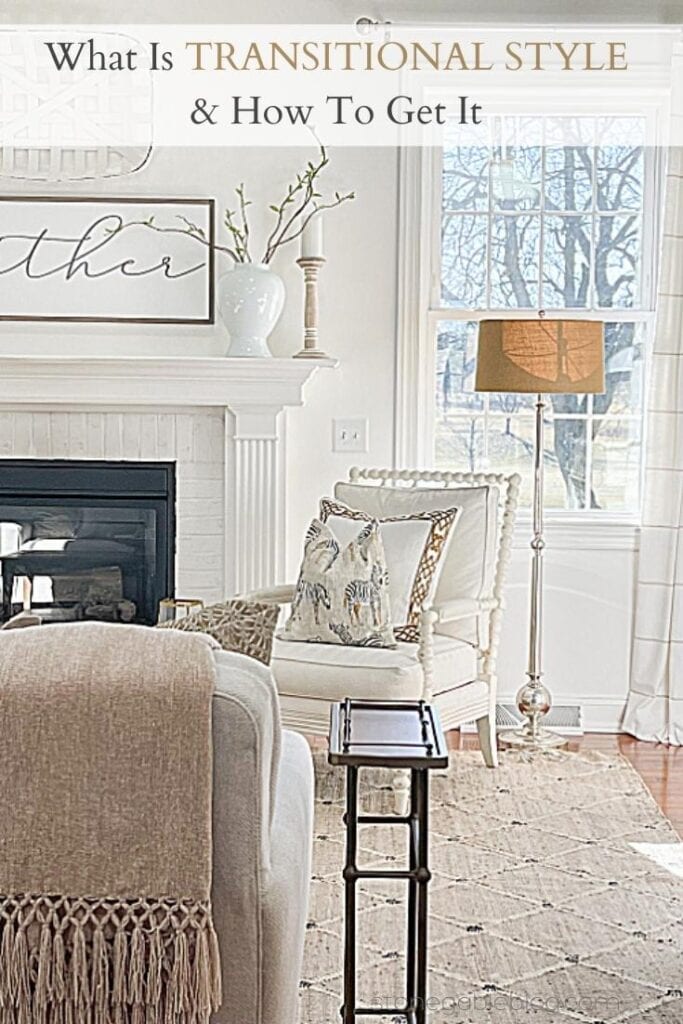
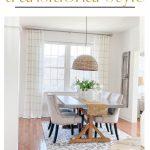
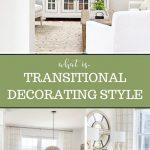
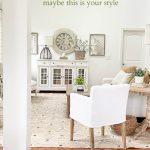

I love this article it was very helpful. I am working hard to neutralize my palette. That said is the zebra pillow in the chair available online?
Good morning! I started my “transition” to “transitional” several years ago. I started by eliminating several traditional pieces of furniture – wing chairs, heavy rolled arm chair-and-a-half, and a leather chair. Also, I eliminated the top of an Ethan Allen hutch – very colonial – and painted the base. The only expensive purchase we made was 2 new transitional leather chairs for our family room. Then the fun started – I started by getting rid of all my old bell shape lamp shades and now use white drum shades. We bought all new lighting in the dining room and kitchen. I can’t believe what an impact that made. My draperies are all creamy white throughout the entire house, with brushed gold rods so I didn’t have to do anything with them. I wanted to add more white in the decor so I started buying new white accessories throughout the house to create good flow. I also reframed some artwork in simple brushed gold frames, and eliminated some of the artwork. This process updated our colonial, and it also gave my husband and I a lift at the same time. We have just ordered a new small more contemporary patio set for 2, and this year’s floral theme on our small “dining” patio is all white.
I love transitional and rhat’s my goal to get farther into it. Does the whole house have to be transitional? I have some pieces that I love and they are not in the pale neutral color palette. Any way to do this?
Thanks for joining Tuesday Turn About link party this week Yvonne!
Such a pretty room, Yvonne! I absolutely love your throw pillow fabrics paired together! Gorgeous!!
Fixed,Kim!
Thanks so much, Kim!
Hi! I love this room and have a question about the rug in the living room. Can you tell me where you found it? I found it on the internet at one time, but can’t seem to locate it again. 🙂 Thanks!
Here you go Shelly:https://rstyle.me/+DF9OcYN_rlfzShtOr5HJgw
I so enjoy your blog and all of the inspirational pictures of your beautiful home! It really helps me to look at my own home with fresh ideas. God bless you for sharing your talent!
This is so wonderful to hear Janet! My passion is to help home decorators create a beautiful home.
I really like the transitional style concept. We live in Florida and it works well here
Great! I hope you found some ideas and inspiration here.
I love reading your blog and seeing pictures of your lovely house. It’s a great way to get a new perspective on my own home. Thanks for sharing your talents with the world!
Love the basket weave is it hard to keep clean? Getting ready to do my kitchen. Yours is a inspiration. ?
Like any natural stone backsplash with grout, it is a bit more work. My contractor put something over the backsplash to keep kitchen messes from penetrating it.
Reading this post.. I said to myself, “yes, my style is transitional, but mine is the dark side of transitional.” We live in the country, raise cattle, and lour home is a ranch style house. I live with ‘men-folk’ that work hard all day, outside… my cherished sofa is the Brooklyn Sofa by Pottery Barn in dark brown leather… purchased at the outlet years ago. My big furniture pieces are dark walnut wood… so how’d I get to transitional? My coffee table and side table are glass & antique brass. My lamps are Crome & glass with cream colored drum shades…. my color palette is brown, grey, cream and soft pink. I know it may sound horrible, but it’s actually beautiful and has converted a very masculine room into a room my feminine sensibilities feel at home in. You are an inspiration and I love reading your blog!
I LOVE that color palette. And decorating styles are interpreted in so many beautiful colors. the sofa sound amazing!
I’ve learned so much from your ideas visually posted! After updating 3 bedrooms, bath and kitchen in my childhood home built in 1953, we’re about to tackle a living-dining-entry area. My concern is keeping a fireplace as a focal point. I love its natural brown-red brick. However, its heavily varnished maple mantle is questionable. Oak floor will be refurbished. Wall bookshelf which is also varnished will be painted neutral same as walls. What suggestion do you have for the fireplace mantle?
Maybe the mantel should be the same color as your floors?
To put it simply, I adore the idea of a transitional style. We put it to good use in sunny Georgia.